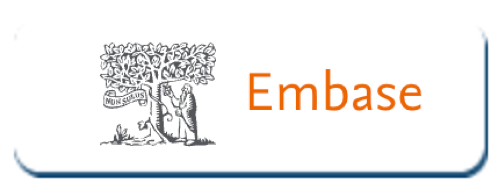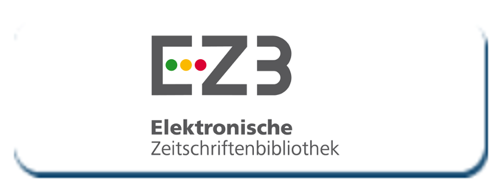A review of childhood anxiety
DOI:
https://doi.org/10.5281/zenodo.7213694Keywords:
Anxiety, childhood, social anxietyAbstract
This review highlights important elements of diagnosis, assessment, and treatment while summarizing findings on the epidemiology and etiology of anxiety disorders in children and adolescents, including separation anxiety disorder, specific phobia, social phobia, agoraphobia, panic disorder, and generalized anxiety disorder. The key development period for anxiety symptoms and syndromes, which can range from brief mild symptoms to severe anxiety disorders, is childhood and adolescence. This article reviews epidemiological data pertaining to risk factors, prevalence, incidence, and course. Developing assessment techniques that are more developmentally sensitive is the main challenge in this age range. Prospective designs that evaluate a wide range of putative vulnerability and risk factors will be necessary in order to identify characteristics that could serve as reliable predictors for onset, course, and outcome. For better early detection, differential diagnosis, prevention, and treatment in this age range, this kind of information is crucial.
References
Nechita D, Nechita F, Motorga R. A review of the influence the anxiety exerts on human life. Rom J Morphol Embryol. 2018;59(4):1045-51.
Crocq MA. A history of anxiety: from Hippocrates to DSM. Dialogues Clin Neurosci. 2015;17(3):319-25.
Muris P, Merckelbach H, Mayer B, Meesters C. Common fears and their relationship to anxiety disorders symptomatology in normal children. Person Individ Diff. 1998;24(4):575-78.
Kessler RC, Petukhova M, Sampson NA, Zaslavsky AM, Wittchen H. Twelve-month and lifetime prevalence and lifetime morbid risk of anxiety and mood disorders in the United States. Int J Methods Psychiatr Res. 2012;21(3):69–84.
Hibaut F. Anxiety disorders: a review of current literature. Dialogues Clin Neurosci. 2017;19(2):87-8.
Beesdo K, Knappe S, Pine DS. Anxiety and anxiety disorders in children and adolescents: developmental issues and implications for DSM-V. Psychiatr Clin North Am. 2009;32(3):483-524.
Wang Z, Whiteside SPH, Sim L, Farah W, Morrow AS, Alsawas M, et al. Comparative Effectiveness and Safety of Cognitive Behavioral Therapy and Pharmacotherapy for Childhood Anxiety Disorders: A Systematic Review and Meta-analysis. JAMA Pediatr. 2017;171(11):1049-56.
Wehry AM, Beesdo-Baum K, Hennelly MM, Connolly SD, Strawn JR. Assessment and treatment of anxiety disorders in children and adolescents. Curr Psychiatry Rep. 2015;17(7):52.
Hirshfeld-Becker DR, Masek B, Henin A, Blakely LR, Pollock-Wurman RA, McQuade J, et al. Cognitive behavioral therapy for 4- to 7-year-old children with anxiety disorders: a randomized clinical trial. J Consult Clin Psychol. 2010;78(4):498-510.
Kessler RC, Berglund P, Demler O, Jin R, Merikangas KR, Walters EE. Lifetime prevalence and age-of-onset distributions of DSM-IV disorders in the National Comorbidity Survey Replication. Arch Gen Psychiatry. 2005;62(6):593-602.
Stein MB, Stein DJ. Social anxiety disorder. Lancet. 2008;371(9618):1115-25.
Alonso J, Angermeyer MC, Lépine JP; European Study of the Epidemiology of Mental Disorders (ESEMeD) Project. The European Study of the Epidemiology of Mental Disorders (ESEMeD) project: an epidemiological basis for informing mental health policies in Europe. Acta Psychiatr Scand Suppl. 2004;(420):5-7.
Baber A. The effect of the COVID-19 pandemic on the psychological state of healthcare workers around the world: A review. The Injector. 2022;1(1):16-30.
Van Ameringen M, Mancini C, Farvolden P. The impact of anxiety disorders on educational achievement. J Anxiety Disord. 2003;17(5):561-71.
Ranta K, La Greca AM, Kaltiala-Heino R, Marttunen M. Social Phobia and Educational and Interpersonal Impairments in Adolescence: A Prospective Study. Child Psychiatry Hum Dev. 2016;47(4):665-77.
Beesdo-Baum K, Knappe S, Fehm L, Höfler M, Lieb R, Hofmann SG, et al. The natural course of social anxiety disorder among adolescents and young adults. Acta Psychiatr Scand. 2012;126(6):411-25.
Asher M, Asnaani A, Aderka IM. Gender differences in social anxiety disorder: A review. Clin Psychol Rev. 2017;56:1-12.
Ruscio AM, Brown TA, Chiu WT, Sareen J, Stein MB, Kessler RC. Social fears and social phobia in the USA: results from the National Comorbidity Survey Replication. Psychol Med. 2008;38(1):15-28.
Aune T, Stiles TC. The effects of depression and stressful life events on the development and maintenance of syndromal social anxiety: sex and age differences. J Clin Child Adolesc Psychol. 2009;38(4):501-12.
Steinberg L, Silverberg SB. The vicissitudes of autonomy in early adolescence. Child Dev. 1986;57(4):841-51.
Burstein M, He JP, Kattan G, Albano AM, Avenevoli S, Merikangas KR. Social phobia and subtypes in the national comorbidity survey-adolescent supplement: prevalence, correlates, and comorbidity. J Am Acad Child Adolesc Psychiatry. 2011;50(9):870-80.
American Psychiatric Association. Diagnostic and statistical manual for mental disorders. DSM-IIIR. 1987;3-24.
Bartlett AA, Singh R, Hunter RG. Anxiety and Epigenetics. Adv Exp Med Biol. 2017;978:145-66.
Gallagher M, Prinstein MJ, Simon V, Spirito A. Social anxiety symptoms and suicidal ideation in a clinical sample of early adolescents: examining loneliness and social support as longitudinal mediators. J Abnorm Child Psychol. 2014;42(6):871-83.
Ollendick TH, Benoit KE. A parent-child interactional model of social anxiety disorder in youth. Clin Child Fam Psychol Rev. 2012;15(1):81-91.
Allen JP, Loeb EL. The Autonomy-Connection Challenge in Adolescent Peer Relationships. Child Dev Perspect. 2015;9(2):101-5.
Steinberg L, Monahan KC. Age differences in resistance to peer influence. Dev Psychol. 2007;43(6):1531-43.
Weymouth BB, Buehler C. Early adolescents' relationships with parents, teachers, and peers and increases in social anxiety symptoms. J Fam Psychol. 2018;32(4):496-506.
Spence SH, Rapee RM. The etiology of social anxiety disorder: An evidence-based model. Behav Res Ther. 2016;86:50-67.
Kilford EJ, Garrett E, Blakemore SJ. The development of social cognition in adolescence: An integrated perspective. Neurosci Biobehav Rev. 2016;70:106-20.
Platt B, Cohen Kadosh K, Lau JY. The role of peer rejection in adolescent depression. Depress Anxiety. 2013;30(9):809-21.
Eldreth D, Hardin MG, Pavletic N, Ernst M. Adolescent transformations of behavioral and neural processes as potential targets for prevention. Prev Sci. 2013;14(3):257-66.
Azizoğlu M. Hekimlerin ötenazi hakkındaki görüşleri. Cer Öğr Bil Der. 2014;6(7):1-7.
Xolmuradova Z, Kudratova Г. Changes in psychological status and eating behavior in children with obesity. IJSP. 2022;(3):35-9.
Abdumuxtarova M. Organizatıon of medical support of the educational process in modern conditions as a factor determining the state of health of school-age children (literature review). IJSP. 2022;(1):10-22.
Downloads
Published
How to Cite
Issue
Section
License
Copyright (c) 2022 Journal of Clinical Trials and Experimental Investigations

This work is licensed under a Creative Commons Attribution 4.0 International License.
![]() The journal is licensed under a Attribution4.0 International (CC BY 4.0).
The journal is licensed under a Attribution4.0 International (CC BY 4.0).











